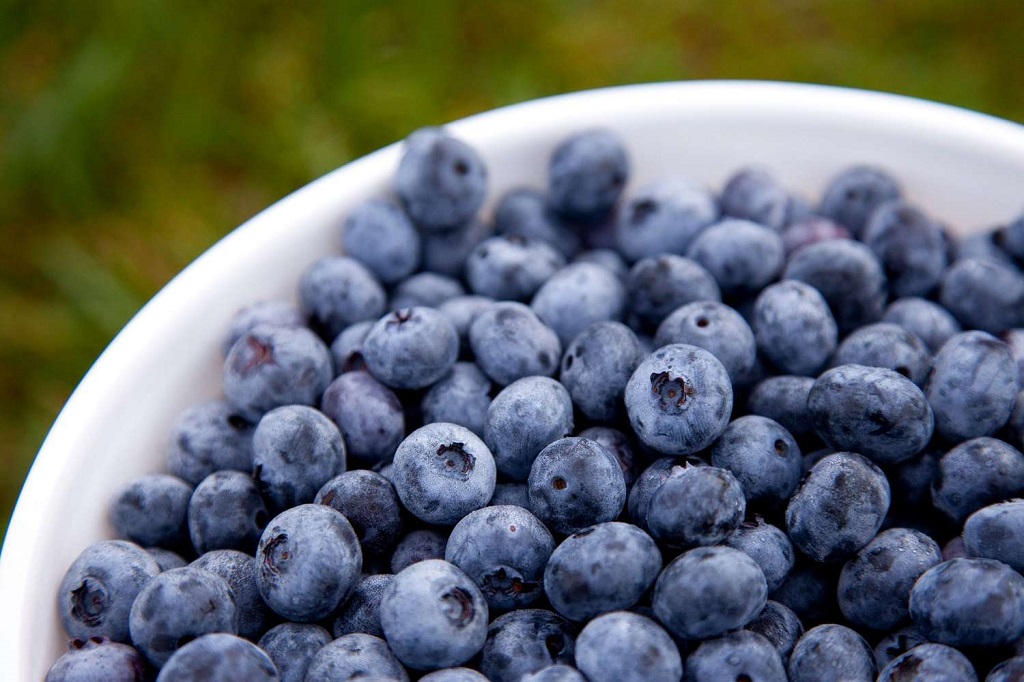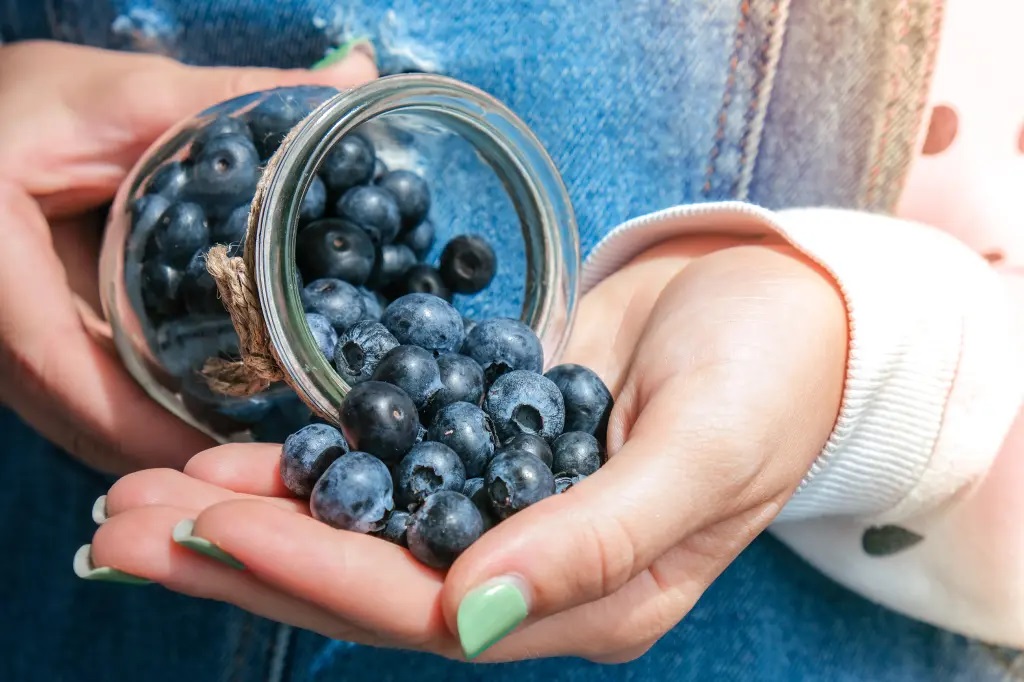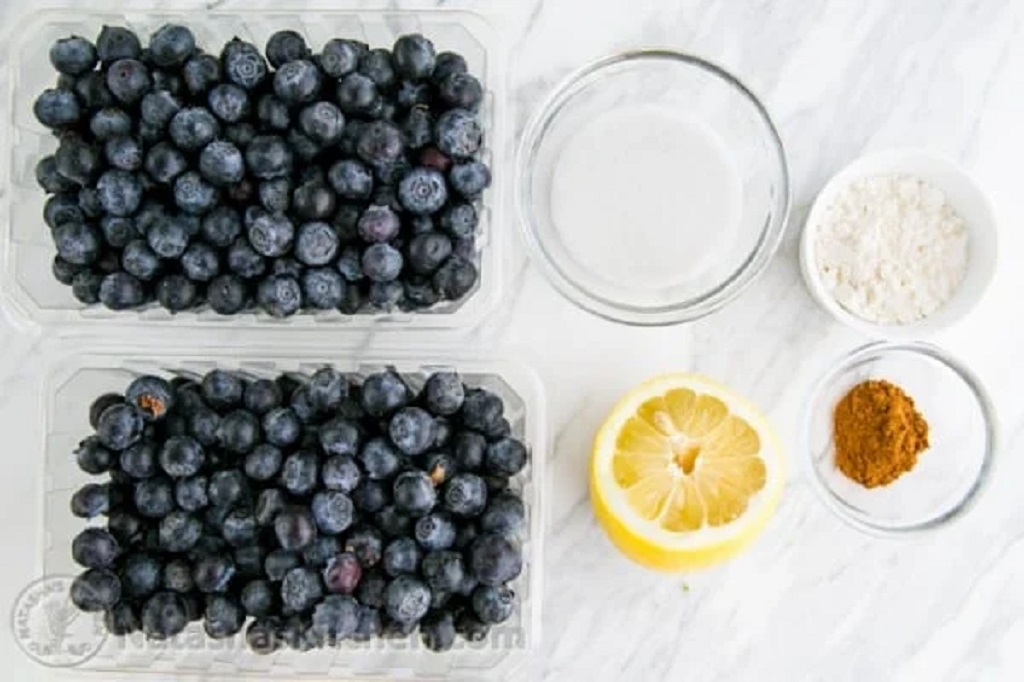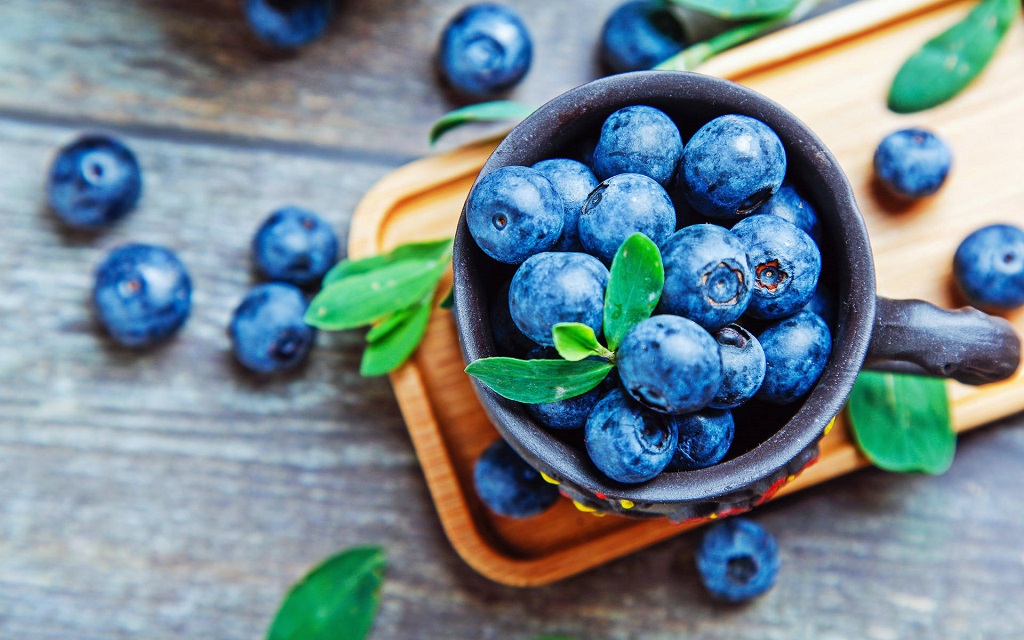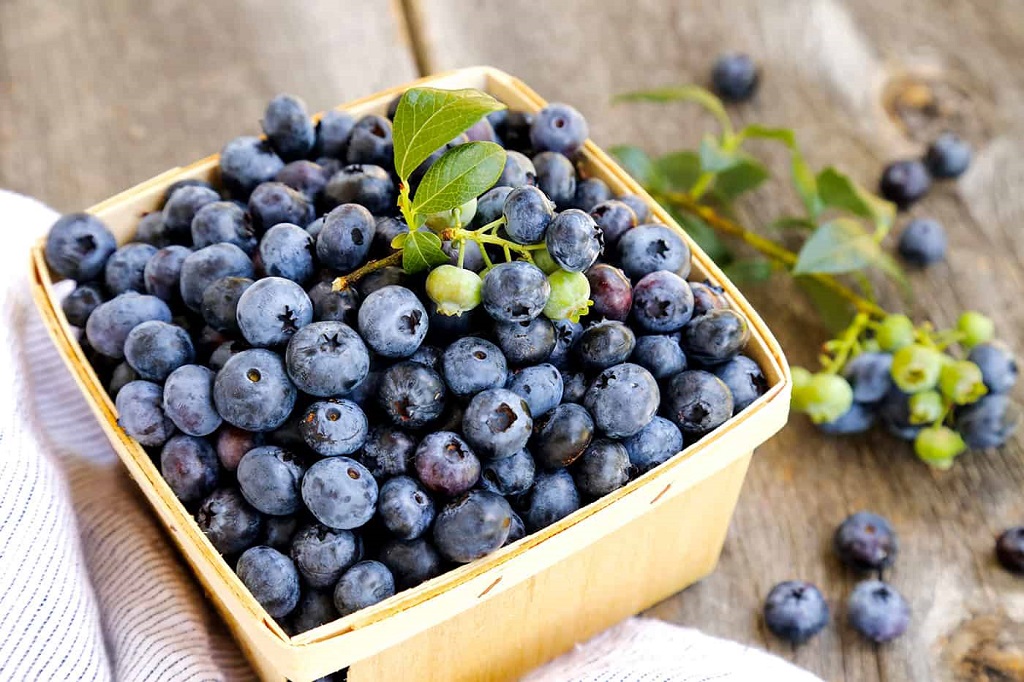
Blueberries are one of my favorite fruits. Their sweet, juicy taste pairs perfectly with yogurt, cereal, or even on their own as a snack. I like to buy them fresh when they are in season during the summer months. I buy frozen wild blueberries for the rest of the year into smoothies, muffins, or pancakes.
But as much as I love blueberries, I try not to overindulge. After all, they are still sugary fruit that can pack several calories. So, how many calories are actually in a pint of blueberries? Let’s take a closer look.
An Overview of Blueberry Nutrition
First, let’s start with an overview of the nutritional profile of blueberries. Here are some key facts:
- Blueberries are low in calories – about 84 calories per cup.
- They are high in fiber – 3.6 grams per cup.
- Blueberries contain vitamin C, vitamin K, and manganese.
- They also contain antioxidants called flavonoids, which have anti-inflammatory benefits.
Blueberries are delicious and incredibly nutritious, packed with essential vitamins, minerals, fiber, and antioxidants. This makes them a very healthy fruit choice overall. Blueberries are relatively low in calories when considering calorie content, making them a guilt-free snack or addition to meals. Discover how many oz in a pint of blueberries, and you’ll find that they offer a flavorful and health-conscious option for those looking to maintain a balanced diet. Incorporating blueberries into your daily meals satisfies your sweet cravings and provides a nutritional boost that your body will thank you for.
Calorie Count in a Pint of Blueberries
A pint of blueberries contains 2 cups. Since there are 84 calories per cup, a pint contains about 168 calories.
Here is the calorie breakdown for a pint of blueberries:
- Total Calories: 168
- Calories from Fat: 16
- Calories from Carbs: 140
- Calories from Protein: 12
So, over 80% of the calories in blueberries come from carbohydrates. This is expected since blueberries contain natural sugars like glucose and fructose. They have a relatively low calorie count for the number of nutrients they provide.
Comparing Blueberries to Other Fruits
How does this calorie count compare to other fruits? Here is a quick comparison per cup:
- Blueberries: 84 calories
- Raspberries: 64 calories
- Strawberries: 49 calories
- Banana: 105 calories
- Apple: 95 calories
- Grapes: 100 calories
- Mango: 100 calories
So, blueberries have a moderate calorie count. Raspberries and strawberries are slightly lower in calories, while mango, grapes, apples, and bananas are somewhat higher. Since blueberries provide more nutrients than these other fruits, their calorie count is quite reasonable.
Choosing the Right Portion Size
When eating blueberries, paying attention to portion sizes is important to keep calories in check. Here are some examples of recommended serving sizes:
- 1⁄2 cup of blueberries = 42 calories
- 1 cup of blueberries = 84 calories
- 1 pint (2 cups) of blueberries = 168 calories
Ideally, you should aim for 1⁄2 – 1 cup of blueberries at a time. Even though they are healthy, large portions quickly add excess sugar and calories. Going over 2 cups would not provide much additional nutritional benefit.
Here are some tips to help control blueberry portion sizes:
- Measure out a single serving before eating. Don’t snack directly from a large container.
- Avoid going back for second or third helpings.
- Mix blueberries into other foods like yogurt or oatmeal instead of eating them plain.
- Drink water with your blueberries to help fill you up.
- Share a pint with someone else instead of eating the entire container yourself.
The Impact of Serving Size on Calories
As you can see, the serving size can make a big difference in the calorie count. Here’s a look at the calorie range in different amounts of blueberries:
- 1⁄4 cup blueberries: 21 calories
- 1⁄2 cup blueberries: 42 calories
- 3⁄4 cup blueberries: 63 calories
- 1 cup blueberries: 84 calories
- 1 1⁄2 cups blueberries: 126 calories
- 2 cups (1 pint) blueberries: 168 calories
- 2 1⁄2 cups blueberries: 210 calories
- 3 cups blueberries: 252 calories
The calories increase pretty rapidly as the portion size goes up. Be mindful of this relationship when snacking on or using blueberries in recipes. Adjust the amount accordingly to keep calories under control.
Does Cooking Affect Blueberry Calories?
Fresh or frozen blueberries have the same calorie content as cooked blueberries. The cooking process does not significantly change their nutritional profile.
Here are a few examples:
- 1⁄2 cup raw blueberries: 42 calories
- 1⁄2 cup cooked blueberries: 42 calories
- 1 cup blueberry pie filling: 86 calories
- 1 cup blueberry sauce: 88 calories
Any minor differences are due to small amounts of added sugar or other ingredients in cooked preparations. Overall, cooked blueberries contain roughly the same calories per cup as fresh blueberries.
Tips for Enjoying Blueberries While Managing Calories
Here are some of my favorite tips for enjoying blueberries as part of a healthy diet:
- Choose wild blueberries when possible – they are smaller and have a more intense flavor.
- Pair blueberries with non-fat plain Greek yogurt for a filling, high-protein snack.
- Blend frozen blueberries with almond milk and protein powder for a post-workout smoothie.
- Mix fresh blueberries into your morning oatmeal along with almonds or walnuts.
- Snack on a handful of blueberries (about 1⁄2 cup) when you want something sweet.
- Use blueberries as a mix-in for salads – they pair well with nuts, cheese, chicken, or fish.
- Bake blueberries into muffins, scones, or pancakes instead of eating them plain.
- Simmer blueberries, lemon juice, and some honey or maple syrup to make a quick fruit sauce.
- Freeze extra blueberries to use later in smoothies, baking, or oatmeal.
You can easily keep calories in check by using intelligent portion control and creative ways to eat blueberries while enjoying their many health benefits.
Health Benefits of Blueberries Despite Their Calories
Even though blueberries have a moderate amount of natural sugar and calories, they are still incredibly healthy. Here’s a look at some of their top health benefits:
1. Rich in Antioxidants
Blueberries contain high levels of antioxidant compounds like anthocyanins and polyphenols. These help combat oxidative stress and inflammation in the body, which can lead to chronic diseases. Eating blueberries regularly can provide antioxidant protection.
2. May Improve Heart Health
Some research indicates the antioxidants in blueberries may help decrease LDL cholesterol oxidation and lower blood pressure levels. This could help reduce the risk of heart disease. More studies are needed, but the early results are promising.
3. May Support Brain Function
The flavonoids in blueberries appear to benefit neurologic function and cognition. They may help protect the brain from oxidative stress to support healthy aging. Animal studies also show promising results related to motor skills and memory.
4. May Aid Blood Sugar Control
Despite their sugar content, some studies on people with type 2 diabetes suggest blueberries can help improve insulin sensitivity and lower blood sugar levels after meals. The fiber, antioxidants, and polyphenols appear to contribute to this beneficial effect on blood sugar regulation.
5. Supports Digestive Health
The fiber in blueberries helps promote good digestive health. Fiber adds bulk to stool, supports regularity, and feeds the healthy bacteria in your gut microbiome. The antioxidant and anti-inflammatory effects also seem to benefit digestive function.
As you can see, blueberries offer much more than just calories and carbs. When eaten in moderation, they provide potent protective compounds that benefit your overall health and wellness.
Understanding Blueberry Varieties
There are many different types of blueberries to choose from. The variety impacts size, flavor, texture, and antioxidant content. Here is an overview of some common blueberry varieties:
Northern Highbush Blueberries – These are the most widely commercially grown blueberries. They produce large blueberries and have a mildly sweet flavor. Most blueberries sold fresh in grocery stores are in Northern Highbush.
Southern Highbush Blueberries – Native to the Southeastern U.S., these are similar to Northern but can grow in warmer climates. They produce slightly smaller berries.
Rabbiteye Blueberries – This later ripening variety has a unique musky flavor. They grow well across much of the Eastern and Southern U.S. These tend to be smaller.
Wild or Lowbush Blueberries – As the name implies, these smaller wild berries grow in forests and mountains. They have an intense, concentrated sweet-tart flavor. Cultivated wild berries have twice the antioxidant capacity of regular blueberries.
Half-high Varieties – These hybrid berries are medium-sized and ripen earlier than other cultivated blueberries. They have good cold hardiness, making them suitable for northern areas.
No matter which variety you choose, blueberries offer a flavor boost and nutrients. Just be mindful of portion sizes since all types will have similar calorie densities.
Freezing Blueberries
Freezing is a great way to preserve fresh blueberries so you can enjoy them year-round. Frozen blueberries maintain nearly the same nutrient profile as new.
Here are some tips for freezing blueberries:
- Wash and dry fresh blueberries thoroughly before freezing. Remove any stems or bruised berries.
- Lay berries in a single layer on a baking sheet and place in the freezer until completely frozen, about 2-3 hours.
- Transfer frozen blueberries to airtight freezer bags or containers. Squeeze out excess air.
- Label bags with the date and berry variety.
- In the freezer, frozen blueberries will maintain quality for up to 12 months.
- Do not thaw blueberries before using them in recipes. Add frozen so they melt during baking.
- For smoothies or oatmeal, let the frozen berries sit out for 10 minutes to thaw slightly before blending or cooking.
Freezing blueberries allows you to enjoy their sweet taste no matter what time of year. Just be sure to account for the calories, whether fresh or frozen.
FAQs
How many calories are in 100 grams of blueberries?
There are around 57 calories in 100 grams of fresh blueberries. A 100-gram serving is about 1⁄2 cup.
Are wild blueberries lower in calories than regular blueberries?
No, wild and regularly cultivated blueberries contain nearly identical amounts of calories by volume. The calorie difference is negligible.
Do dried blueberries have more calories?
Yes, dried blueberries are more calorie-dense. A 1⁄4 cup of dried blueberries contains around 110 calories compared to 21 calories in a 1⁄4 cup of fresh blueberries. Dried fruit loses water during processing, which concentrates calories and sugar.
Is one cup of blueberries a healthy snack?
Yes, one cup of blueberries (84 calories) is a very healthy snack choice. It provides antioxidants, fiber, vitamins, and minerals without too many calories. Just be careful not to overload on portion sizes.
Can I eat unlimited blueberries and still lose weight?
No, you cannot eat unlimited food, even healthy options like blueberries, on a weight-loss diet. Overdoing portion sizes of any fruit can lead to excess sugar and calories, which may hinder weight loss efforts. Stick to reasonable 1⁄2 – 1 cup portion sizes of blueberries.
In Summary
A pint of fresh blueberries contains about 168 calories, mostly from carbohydrates. Blueberries provide essential nutrients, antioxidants, and fiber despite their natural sugar content. When eaten in proper portion sizes, blueberries are a healthy addition to your diet. Curious about freezing pasta? Just be mindful of serving sizes to keep calories under control, and remember to enjoy blueberries in moderation along with an overall balanced diet and active lifestyle for the best results.

